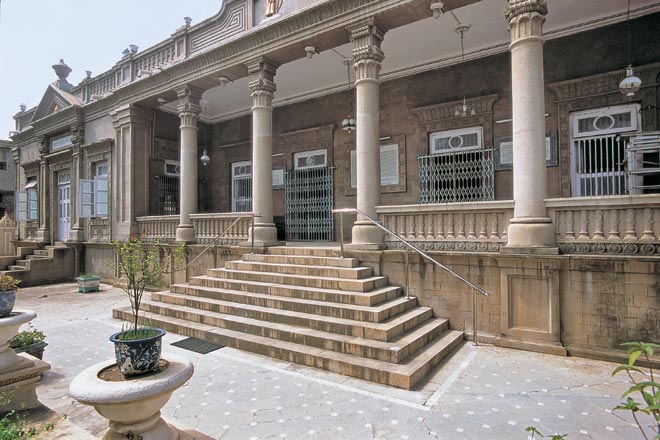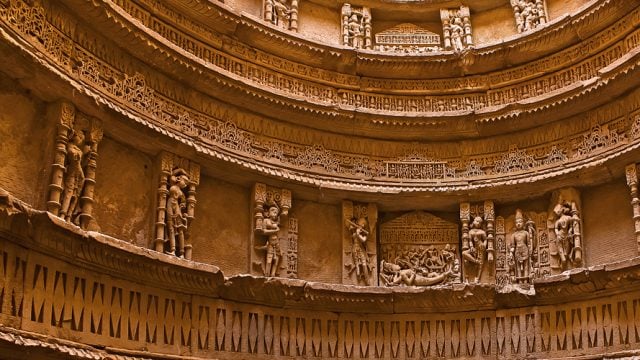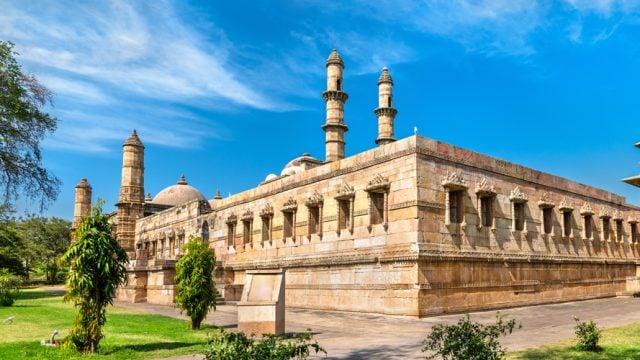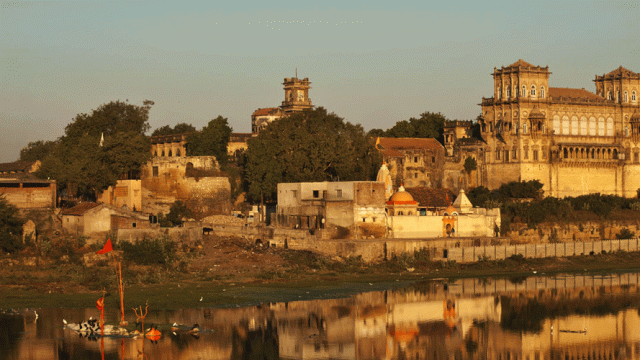Fast facts
State: Gujarat
Distance: 207 km N of Mumbai
When to go: July to September,
Tourist Office: TCGL, Maker Chambers V, 907, 9th Floor, Nariman Point, Mumbai
Tel: 022-22024925
Web: gujarattourism.com
STD code: 0260
Getting there
Rail: Udvada Station
Road: NH8 to Pardi via Manor, Charoti Naka, Talasari, Bhilad and Vapi Junction; district road to Udvada
A stranger exploring the narrow lanes of Udvada on a hazy Gujarati afternoon could well find himself wondering whether the rattling contraption that ferried him into town was an auto rickshaw or a time machine. For this pastoral enclave, dotted with storybook cottages, slumbering goats and whitewashed walls, seems separated by many decades from the concrete-and-cacophony hell of nearby Vapi. But this coastal town in Gujarat is about much more than leafy lanes and little houses with graceful eaves. At the heart of the town stands the Iranshah Atash Behram, the most important spiritual centre for Zoroastrians the world over. And whether they have just gotten married, started a business or bought a new car, hordes of Parsi worshippers from Mumbai to Montreal make their way to this sleepy town to pay their respects to the 1,280-year-old holy fire enshrined within the sacred Atash Behram. The Parsis are very protective about Udvada because the Iranshah is believed to be their oldest consecrated fire.
Of course, Udvada is not entirely immune to change, and only about 150 Parsi households continue to reside here.
Things to see and do
Udvada is a tiny town and if you are a brisk walker, you could probably cover every single street in about an hour. If, however, you like to stroll on the beach, inhale the briny air and peer into porches, you can spend a full weekend here.
Iranshah Atash Behram
Although the Iranshah Atash Behram is a large structure, it is virtually hidden by whitewashed walls and a protective ring of houses. While the fire temple itself is out of bounds for non-Zoroastrians, the little streets, the sandal-wood-sellers and the bustle in the vicinity are fascinating.
The Iranshah is said to have been created out of 16 fires, including fire from a burning corpse, a shepherd’s house, a goldsmith’s hearth, a potter’s kiln and from lightning itself. Instead of waiting for lightning to strike and create a fire, it is believed that the high priest Nairyosang Dhaval meditated for days and when the heavens finally cooperated, he trapped the fire and proceeded with his rituals.
Unchanging Streets
Much of the fabric of old Udvada is still intact and visitors can spend a wonderful evening reliving a bygone age. The old Parsi houses in Udvada reflect a distinct culture. Most have double otlas or porches – the outer one is used for bargaining with veggie vendors while the inner one is used for praying and gossip sessions. Little galis run behind the houses that, in the old days, were used by night soil collectors and menstruating women. Most houses still have their own wells because well water plays an integral role in the purification rituals that the priests have to undergo.
Shopping
Wherever there are Parses’, there is food. On Sundays, little tables piled high with home-made pickles, cakes and berries appear in the market and on the streets leading up to the fire temple. The fish and prawn pickles and freshly baked biscuits are particularly popular.
Where to stay
Parsi pilgrims can choose from a number of inexpensive dharamshalas in the city. Others have the following options.
Globe Hotel (Tel: 0260-2345243/474; Tariff: INR 1,600-2,000), near the beach is a cluster of old and new bungalows with clean and functional rooms, and has always been very popular. There are usually kids playing in the compound, many visitors relaxing on the porches and a friendly atmosphere. They also arrange tourist guides on request.
Iranshah Apartment (Tel: 2345643; Tariff: INR 2,000 for 4 people) has fully furnished apartments. Ashsisvang Hotel (Tel: 2345700/500; Tariff: INR 1,400-1,800 per person, with meals), located opposite the Fire Temple, has AC and non-AC rooms.
Where to eat
While several tiny eateries have cropped up, most visitors to Udvada eat the enormous meals served up by Globe Hotel. Breakfasts feature eggs and at least one meat dish keema or cutlets. Lunch often features bhoi fish, a local speciality, and dhansak – ambrosial mutton gravy with dal.
Try dhansak, Russian patties and pulaodal at Ashsisvang Hotel’s restaurant. These are supplemented by a procession of hawkers who supply hand-churned ice-creams, neera (unfermented toddy) and other treats. Little wonder, then, that many Parsis make their way to Udvada for a foodie weekend as well. N
Parsis
pilgrimage
weekend breaks
Leave a Reply
You must be logged in to post a comment.





